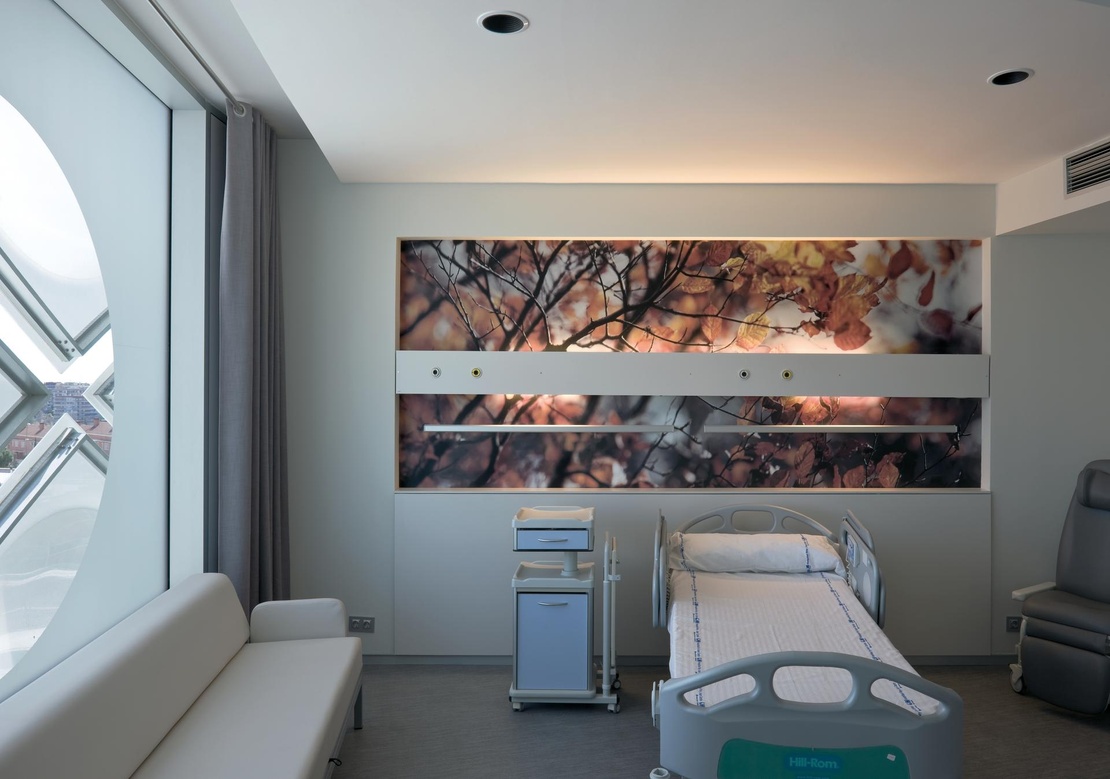Benefits of integrative lighting in hospitals
Jul 24 2020
The lighting system in hospitals has two main purposes: Promoting patient recovery and ensuring healthcare professionals perform their duties under optimum conditions.
The latest trends in the lighting of healthcare spaces are moving towards the humanisation of the environment. Therefore, buildings are conceived from a friendly and humane perspective, without forgetting about functionality. That is why lighting strategies must be aligned with the new ways of understanding hospital architecture and must be combined with the environment according to five fundamental criteria:
- Contributing to the well-being of patients and employees
- Achieving greater visual comfort
- Regulating circadian rhythms
- Improving mood
- Breaking the spaces' monotony using dynamic lighting
Circadian lighting in hospitals
The circadian lighting system varies according to the natural cycles of the organism by synchronising with the variations in outdoor natural light. In other words, changes in lighting can favour or prevent the production of melatonin, the hormone in charge of regulating sleep-wake cycles in the organism.
Under normal conditions, circadian stimulation begins when your organism activates after receiving the first rays of natural light, which promotes the production of the cortisol hormone and prepares you for daily tasks by awaking a vigilant state that helps you have high energy levels in the early hours of the day. Subsequently, it should promote concentration in daily tasks, then relaxation, and finally rest. As the hours pass by, cortisol levels drop to allow for the relaxation of the organism when melatonin production starts.
However, due to the peculiarities of shift work at hospital areas, the succession of circadian stimulation stages can occur at different times of the day with the purpose of adapting to the personnel's activity. On a night shift, the activation phase would begin at night and end with the rest phase at the end of the shift, that is, in the morning.
The importance of integrative lighting in hospitals
Lighting in hospitals should vary according to the uses of the different spaces and the people in them. An integrative lighting design allows for the stimulation of the patient's well-being by varying the light intensity, colour temperature, and spectral composition to achieve synchronisation with outdoor light and reduce the impact of hospitalisation on circadian rhythms. The use of technology such as LED Well-being or multispectral light has a positive impact on people's well-being by offering a light spectrum suitable for adequate circadian stimulation.
Patient rooms
These are spaces in which patients recover and doctors work. Lighting must meet the needs of both patients and doctors. Therefore, a dynamic lighting design is the best option. Apart from adapting to the patients' tasks and circadian rhythms, it is essential to pay attention to three fundamental aspects:
- Indirect lighting creates luminous and spacious environments. The ceiling lighting is of paramount importance since patients often spend a lot of time looking at it. It is also important to install luminaires with a high degree of visual comfort and a high level of shielding, or luminaires classified as risk-free (Group 0) in accordance with the EN 62471 regulation on photobiological risk.
- Luminaires should be integrated into a space with the purpose of creating cosy rooms since their psychological impact can favour recovery.
- Automated and personalised lighting can be controlled from a bed to obtain different scenes. Therefore, patients can regulate luminaires according to different activities such as reading or resting.
According to healthcare professionals, room lighting should be separated into two types:
- Additional lighting for the examination and treatment of patients with the purpose of ensuring visual ergonomic conditions arising from the activity. A good option could be headboard or portable luminaires.
- Wake-up lighting at night that allows for the movement of healthcare professionals and the monitoring of the patient under observation without using general light that affects circadian rhythms. For this purpose, the installation of luminaires with a motion sensor and recessed in a wall at a low height is recommended.
Treatment and examination units
Although the lighting needs of this kind of spaces depend on the medical specialty carried out in them, some common parameters can be followed.
Regarding lighting systems on treatment rooms, luminaires' tightness should be specially considered in order to avoid potential contamination of the space. Hygiene criteria are fundamental when choosing luminaires that facilitate cleaning and prevent the accumulation of dirt on surfaces.
In order to perform a visual task correctly in this kind of spaces, four aspects should be taken into account:
- Adequate illuminance and luminance level
- The position of the luminaires to avoid glares and shadows
- High level of light sources' chromatic reproduction
- High level of visual comfort
Outdoor access points
The main purpose of outdoor lighting in accesses to hospital areas is the safety of both employees and visitors. Therefore, the installation of bollards is the best option for this type of access.
Besides, some architectural lighting designs can highlight the physical characteristics of buildings. It should be noted that, nowadays, architectural trends in hospital design are oriented towards the humanisation of the space with the purpose of creating friendly environments for patients, companions, and healthcare professionals.






